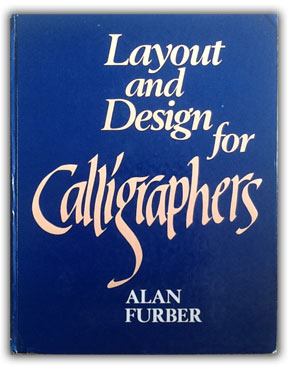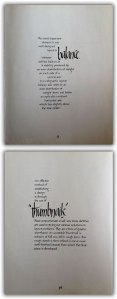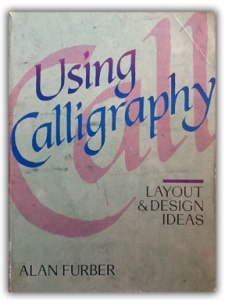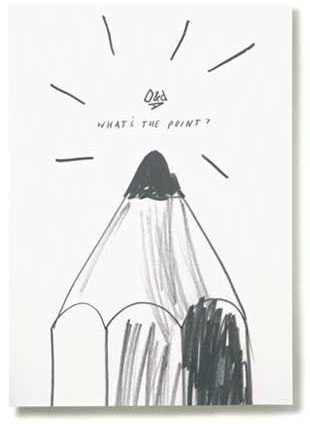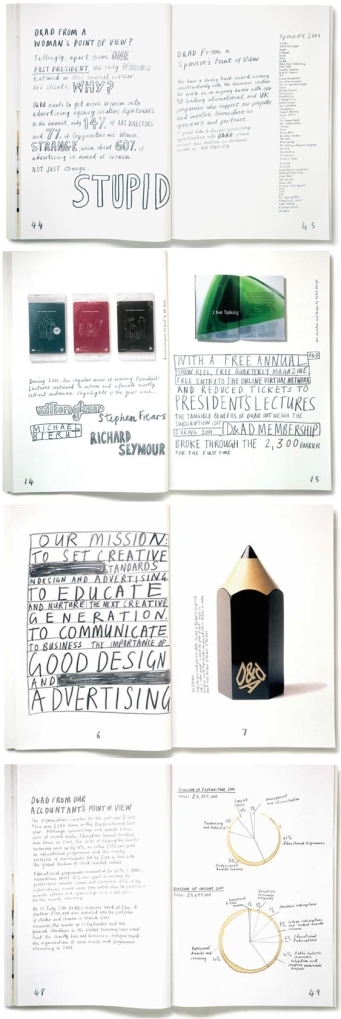Finding calligraphic inspiration in unexpected places
October 12, 2013 2 Comments
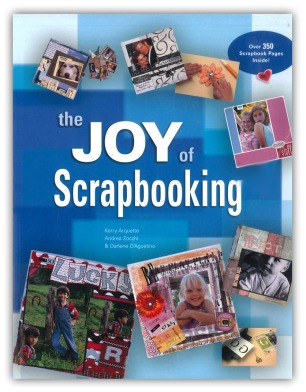 Yes… I know… you came here looking for information on calligraphy, and were greeted by the front cover of The Joy of Scrapbooking.
Yes… I know… you came here looking for information on calligraphy, and were greeted by the front cover of The Joy of Scrapbooking.
But despite what you’re thinking, I haven’t gone over to the dark side. I’m still a calligrapher, not a scrapbooker. And if you bear with me you’ll find that there’s method in my madness (and maybe a little madness in my method, but you can be the judge!).
I’ll get back to The Joys of Scrapbooking in a moment, but I’ll lead you there with a question that is regularly asked of me by my calligraphy students. “Do you need to be artistic to be good at calligraphy?”
I never hesitate in answering, “no.”
Of course, it is advantageous for an incipient scribe to be creative, imaginative, and naturally good at art. Calligraphy projects will definitely benefit if executed by someone possessing those qualities. But such qualities are not essential in the quest to become a competent calligrapher (in my opinion, the requirements are guidance, application, discipline, lots of practice and patience).
Despite my profession, I confess that I don’t regard myself as naturally creative or artistic. And although I’ve been producing original calligraphic artwork for the past twenty five years, ideas have never come easy. The problem is I have little, if any, imagination.
 Many years ago, as a school pupil in art class, I had no difficulty drawing a still life. If a vase of flowers was placed in front of me, I could produce a passable sketch in no time. But if I was asked to draw something from my imagination, without any props, I was incapable. If I couldn’t see it, then I couldn’t create it. And, all these years later, little has changed. My calligraphic creativity requires kick-starting from visible sources.
Many years ago, as a school pupil in art class, I had no difficulty drawing a still life. If a vase of flowers was placed in front of me, I could produce a passable sketch in no time. But if I was asked to draw something from my imagination, without any props, I was incapable. If I couldn’t see it, then I couldn’t create it. And, all these years later, little has changed. My calligraphic creativity requires kick-starting from visible sources.
For decades, when seeking such inspiration for my artwork, I scanned my many calligraphy books for ideas. I didn’t copy or plagiarise other calligraphers’ work. I was simply looking for appropriate design layouts and colour schemes that inspired me. As soon as that initial spark fired up my creativity, my own talent and expertise took over and saw the job through to completion.
Searching through those calligraphy books worked for a while, but I eventually became so familiar with their illustrations that they no longer did the trick. I began to look for inspiration in design books with a typographic slant, since remaining within a lettering context seemed to be a natural progression. I was immediately inspired by the content of many excellent books including, Roger C Parker’s Looking Good In Print, Robin Williams’ Design Workshop, and Leslie Cabarga’s Logo, Font and Lettering Bible. But I didn’t appreciate how much I was limiting my progress by seeking inspiration only within the confines of the lettering arts.
That changed unexpectedly a few years ago when I found myself in a Glasgow bookstore, browsing books in the arts and crafts section. Having exhausted the calligraphy and typography books, and with time to kill, I began to idly leaf through books on crafts that held no interest for me… or so I thought.
I’m not sure what I expected to find when I opened a copy of The Joy of Scrapbooking, but it certainly wasn’t the treasure trove of original designs and amazing colour schemes that confronted me. I was transfixed. Up to that point I knew nothing about scrapbooking (I still know very little), but the more pages I turned, the more enthusiastic and inspired I became. The book was crammed with amazing examples of scrapbooked artwork that incorporated well-executed typography and occasional examples of hand-lettering. And I was knocked out by the original design layouts, varied colour combinations and wonderful textures. A bonus was the inclusion of tips on digital scrapbooking that I could easily apply to my digital calligraphy projects.
Before I knew it, I was at the checkout with my credit card in one hand, and The Joy of Scrapbooking – my new favourite reference book – in the other.
This unexpected discovery taught me to expand my horizons in terms of where I sought inspiration for my calligraphy, and I began to unearth further resources within non-calligraphic books. A fine example is Peter King & Company’s,1000 Greetings, which features inspirational designs in the form of “creative correspondence for all occasions.” I discovered the book by accident in my local library, which was a lucky break, since its illustrations have sparked my creativity on numerous occasions.
In my experience, it is natural and easy for calligraphers to play safe, and stay within the boundaries of the lettering arts when seeking calligraphic inspiration. Yet other crafts and disciplines have much to offer… it’s just a matter of making the effort to peer over the boundary fence once in a while to check what’s on the other side.
So, the next time you are in a bookstore, stride past the familiar calligraphy section and browse some random craft books instead… you never know what you might find. And, if all else fails, you can always buy a used copy of The Joy of Scrapbooking from Amazon for £1.89 plus p&p (at time of writing). It definitely worked for me.
If you are a calligrapher, and have been influenced, motivated, or inspired by non-calligraphic sources, I’d be delighted if you left a comment sharing your discoveries.
